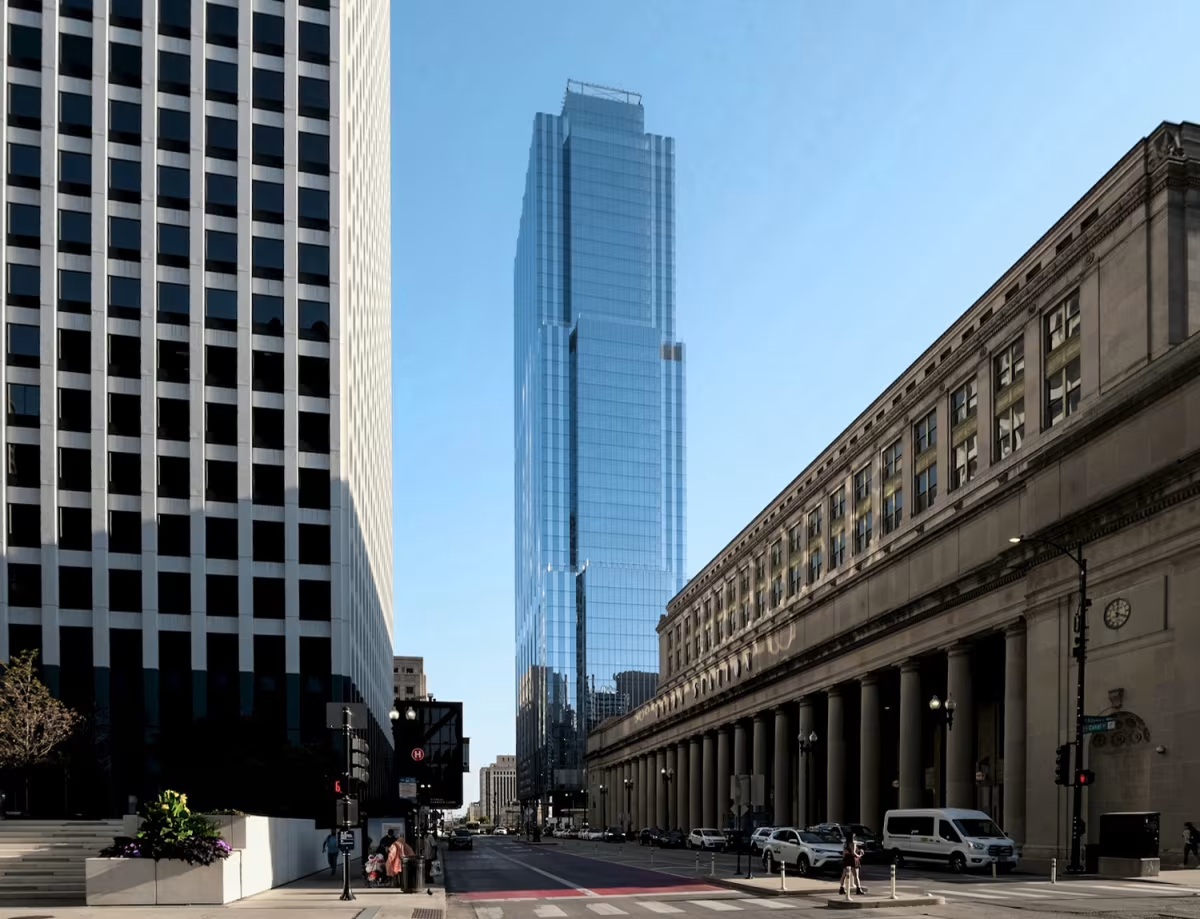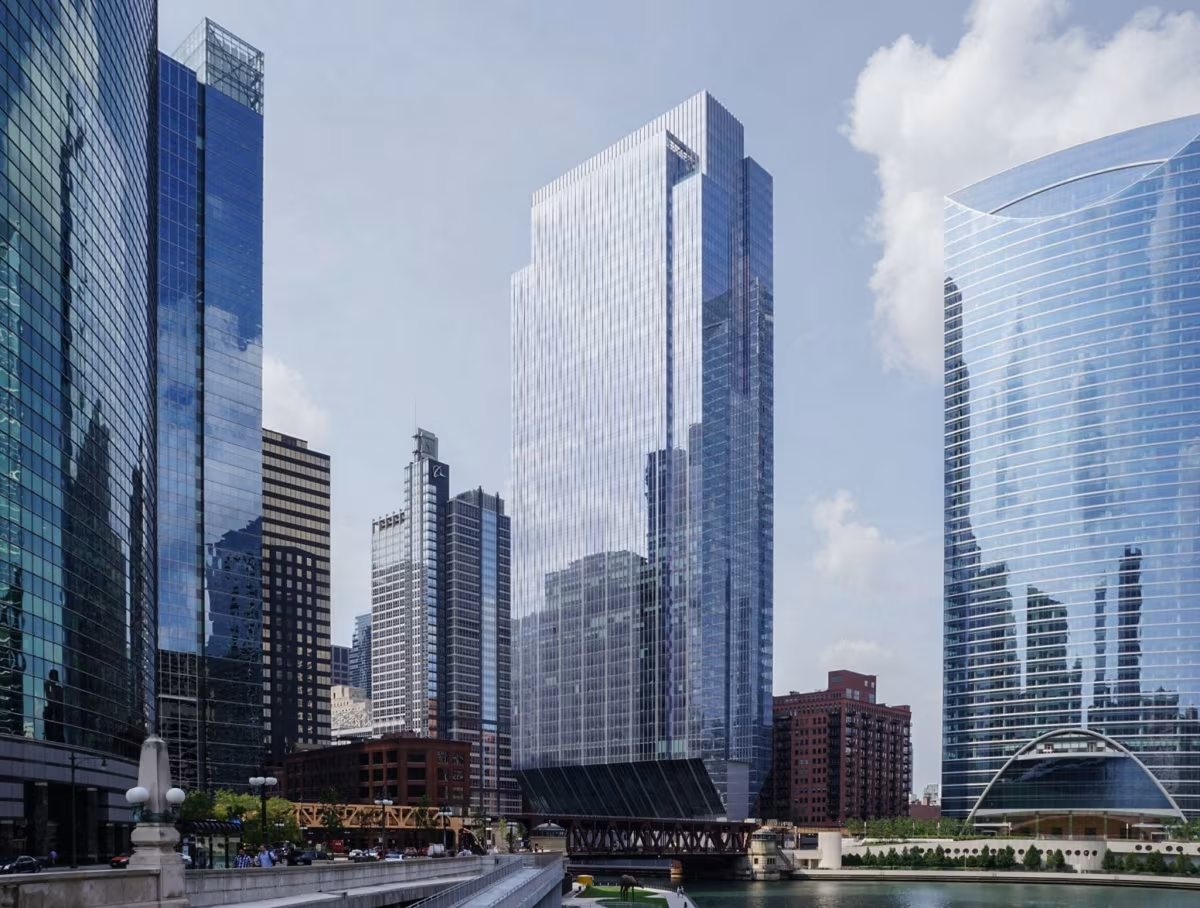BMO Tower vs 150 North Riverside Building


Comparing the BMO Tower and the 150 North Riverside Building is especially interesting because they share much in common. Both rise in Chicago, IL both were designed by Goettsch Partners , and they were completed within 4 years of each other.
This overlap gives us a unique opportunity to understand how Goettsch Partners approached different commissions in the same urban context and historical context during a short period.
Height & Size
These two towers present an interesting contrast in their proportions. The BMO Tower rises higher at 728ft (222m), while the 150 North Riverside Building reaches 725ft (221m). However, the 150 North Riverside Building accommodates more floors with 54 levels above ground, compared to 51 floors in the BMO Tower.
This suggests different approaches to interior space design. The BMO Tower has an average floor-to-floor height of approximately 4.4m, while the 150 North Riverside Building has more compact floors averaging around 4.1m each.
These different proportions likely reflect the specific needs each building was designed to serve, whether driven by zoning regulations, client requirements, or the intended use of the spaces within. The contrast shows how architects can achieve different spatial experiences even when working with similar overall building scales.
Architectural Style
Both the BMO Tower and the 150 North Riverside Building were designed in line with the aesthetic conventions of the Contemporary style.
At the time, this style was at the height of its popularity. So both Goettsch Partners and Goettsch Partners followed what was in many ways expected of them, producing designs that fit comfortably within contemporary architectural norms, rather than breaking with convention.
Uses
Both the BMO Tower and the 150 North Riverside Building were designed to serve as commercial towers, and that has remained their main use since their completion, serving similar roles in the urban fabric.
Both towers provide significant parking capacity, with BMO Tower offering 324 spaces and the 150 North Riverside Building offering 72.
Structure & Facade
The two towers rely on different structural systems, reflecting distinct engineering strategies.
The BMO Tower uses a Frame structural system, which relies on a regular grid of columns and beams to sustain its weight, while the 150 North Riverside Building uses a Framed Tube In Tube system, that combines a strong central core with a perimeter tube of columns.
Yet, when it comes to their facade, they both employed the same solution, a Curtain Wall facade.
A curtain wall is a non-load-bearing facade hung from the structural frame. It is anchored to floor slabs and transfers only its own weight and wind loads, allowing for sleek, glassy exteriors.
| BMO Tower | 150 North Riverside Building | |
|---|---|---|
| Goettsch Partners | Architect | Goettsch Partners |
| 2018 | Design Ended | 2013 |
| 2019 | Construction Started | 2014 |
| 2021 | Year Completed | 2017 |
| Contemporary | Architectural Style | Contemporary |
| Commercial | Current Use | Commercial |
| 51 | Floors Above Ground | 54 |
| 2 | Floors Below Ground | 1 |
| 222 m | Height (m) | 221 m |
| 140,000 m² | Usable Area (m²) | 1,226,111 m² |
| Frame | Structure Type | Framed Tube In Tube |
| Concrete And Steel | Vertical Structure Material | Steel And Concrete |
| Poured Concrete Over Metal Decking | Horizontal Structure Material | Concrete |
| No | Facade Structural? | No |
| Glass, Steel | Main Facade Material | Glass |
| Clark Construction | Main Contractor | Clark Construction |
| Riverside Investment & Development | Developer | Riverside Investment & Development |
| Wolff Landscape Architecture | Landscape Architect | Wolff Landscape Architecture |
| Kone | Elevator Company | Schindler |
| Environmental Systems Design, Inc. | MEP Engineer | Cosentini Associates |
| Magnusson Klemencic Associates | Structural Engineer | Magnusson Klemencic Associates |
| IL | State | IL |
| Chicago | City | Chicago |
| 320 South Canal Street | Address | 150 North Riverside Plaza |